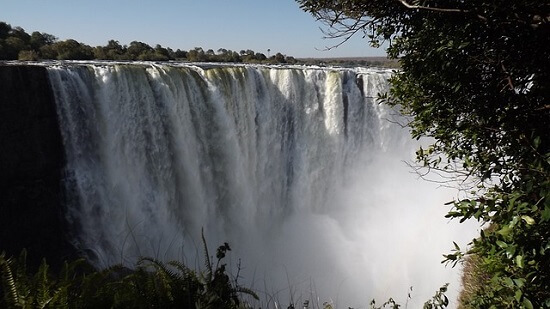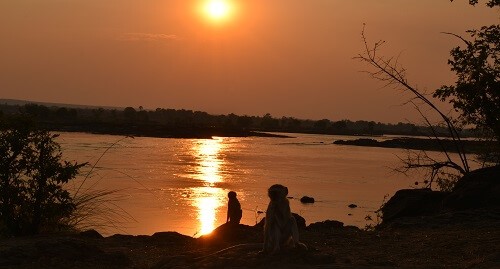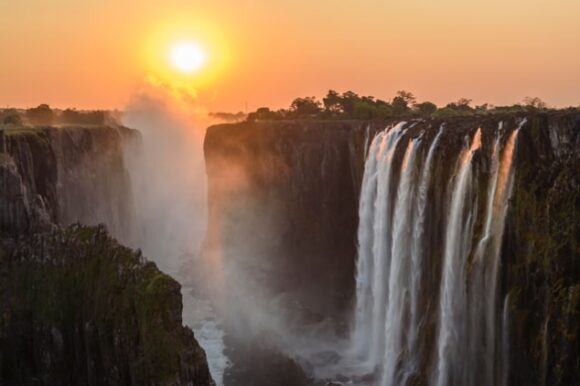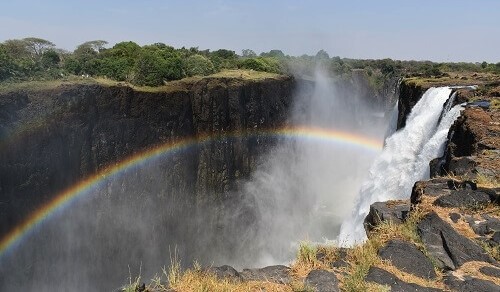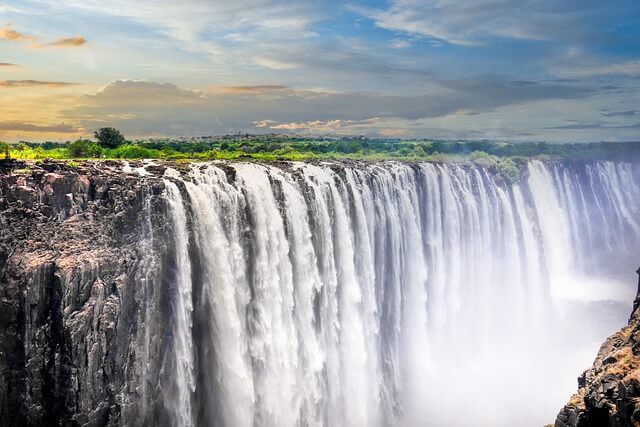What Do I Need To Know Before Visiting Victoria Falls (Zim & Zam)?
If you planning to visit Victoria Falls for the first time, you should know some basic information about the country and how to prepare for the trip.
Before we went for our volunteering program in Victoria Falls Zambia, followed by a holiday in Victoria Falls on both sides of Zambia and Zimbabwe, I did deep research about both countries and activities that can be done here.
Before you start planning your trip to Victoria Falls in Zambia and Zimbabwe, read this blog post where you will find information about the country, what currency to bring, what visa you need, what to pack, and many more.
All You Need To Know Before Visiting Victoria Falls
Many people don’t know where is Victoria Falls located and that it is part of two different countries Zambia and Zimbabwe. Victoria Falls is located in the southern part of Africa in Zambia and Zimbabwe separated by the Zambezi River.
Therefore you can see the Victoria Falls from both sides, Zambia and Zimbabwe. To know which side of Victoria Falls is better, read my article here.
Basic information about Zambia
Zambia is located in Southern Africa, bordering Zimbabwe. The borders are so close to each other that you can walk along the bridge, called Victoria Falls Bridge, to get from one country to another.
The main river is the Zambezi River which falls about 100 meters creating the famous Victoria Falls.
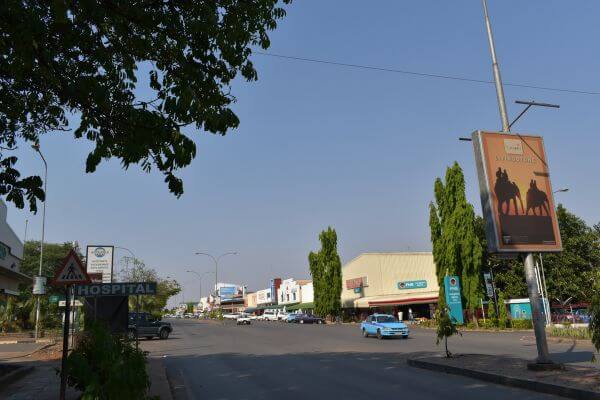
Capital city– Lusaka
Town in Victoria Falls – Livingstone Town
Religion– Christianity
Currency– Zambian Kwacha (ZMW) The best is to take USD with you and then change it there. However, many companies and hotels are accepting USD too.
Also, take your credit or debit card, it is accepted in hotels and some shops and you can also take money from ATMs there. However, don’t rely on cards only and take some amount of cash with you.
Time Zone– UTC+2
Driving side– left
Official language– English
Visa– Some nationalities are exempt from tourist visas, some can buy upon arrival and some have to request before departure. Please check them out here where you can also apply online.
There is also a KAZA visa which is for both Zambia and Zimbabwe for 30 days. The fee is $50. This is the best option when visiting both Zambia and Zimbabwe.
Also, your passport should be valid for at least 6 months from your departure date.
Vaccinations– The routine vaccinations taken during our childhood are recommended (Tetanus, Hepatitis A, and B). Also, Typhoid especially if you are going to spend time in villages and rural areas.
You must have Yellow fever vaccination only if you are coming from countries with a high risk of Yellow fever, otherwise, you don’t need it as Yellow fever is not present in Zambia.
Rabies vaccination is advised to take if you are going to work with animals.
Malaria is present in Zambia and you need to take mosquito spray with strong repellents. Mosquito nets are in every hotel or lodge. If you are not staying in a hotel or lodge, but in some cheaper accommodation, it is advisable to take your own mosquito net.
Tablets against malaria are optional and could be necessary only during the rainy season. We visited during the dry season and only had mosquito spray and it was enough.
Climate– Is mostly humid subtropical. There are two seasons, rainy and dry. The wet season is from November to April with most rain occurring from November to February.
The dry season is from May to October/November. From May to August is cooler, while September to November is hot.
Basic information about Zimbabwe
Zimbabwe is also located in Southeast Africa. However most of the Falls, which is 75% can be seen from the Zimbabwe side.
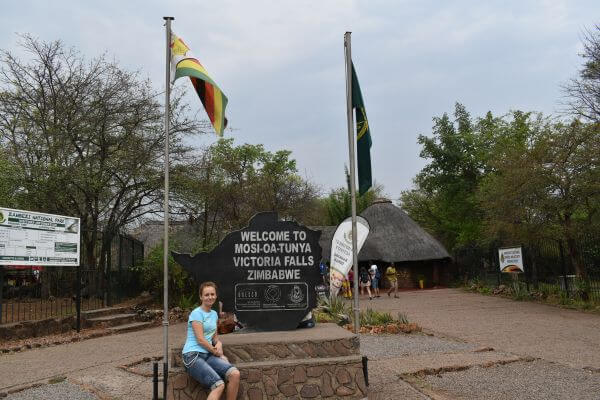
Capital city– Harare
Town in Victoria Falls – Victoria Falls Town
Religion– Mostly Christianity
Currency– Zimbabwean dollar (ZWD). Bring USD with you, they are accepted almost everywhere or you can exchange them here. Also, bring a credit or debit card, but don’t rely solely on it. You want to have a good amount of cash with you, however not too much as that is not safe.
Time zone– UTC+2
Driving side– left
Official language– There are 16 official languages, including English
Visa– The same as in Zambia the visa depends on nationality in case you don’t have a KAZA visa. Also, your passport should be valid for at least 6 months from your departure date.
Vaccination– apply the same as for Zambia
Climate– Subtropical, the same as in Zambia
When is the best time to visit Victoria Falls
Given that the weather in these countries tends to be warm throughout the year, there is no specific period when you must visit.
However, the ideal time for you to plan your trip will depend on what activities you want to engage in during your stay.
For instance, from November to April, the rainy season causes the Zambezi River to rise, resulting in a more robust Victoria Falls.
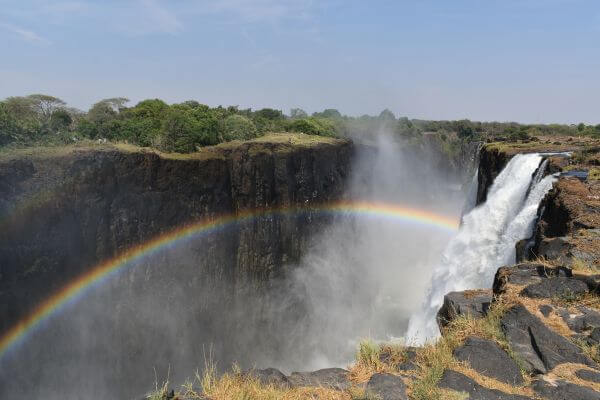
If your primary objective is to witness the falls at their most powerful, you should consider visiting towards the middle or end of the rainy season.
You should bring a raincoat and a waterproof case for the camera as some areas may get wet due to the falls.
Regarding safaris, I don’t recommend visiting during October and November since it is very hot, and animals are hiding in the bushes. During our visit in October, we spotted very few animals.
During the rainy season, the parks may be closed as the roads can get very muddy and also it is low season for seeing the animals as there is enough water everywhere and bushes are thick with plenty of greenery where animals stay.
The most recommended period to go on a safari is from June to September. You can explore parks in Zambia and Zimbabwe, or you may consider going to Botswana, which is widely regarded as the best option.
In case you would like to visit Livingstone Island and Devil’s Pool, you need to know that this is possible only during the dry season when the water is at its lowest. In high-water season Devil’s Pool is closed.
Usually, the pool is open from late August till the beginning of January. The pool is located on the Zambian side of Victoria Falls. I do recommend planning your activities and booking them in advance before you go.
For more details about the best time to visit Victoria Falls, check my article here.
Is Victoria Falls safe?
Victoria Falls on both sides of Zambia and Zimbabwe is a very safe place. Both towns Livingston Town in Zambia and Victoria Falls in Zimbabwe are very tourist places and you can freely walk around.
While working as volunteers in Zambia we walked to the village or took a taxi where we were teaching children. We felt very safe there during the day.
If you want to go out at night, take a taxi or rent a car as you are in a National Park and animals can walk freely there. We saw some elephants, giraffes, and baboons on the road during the day.
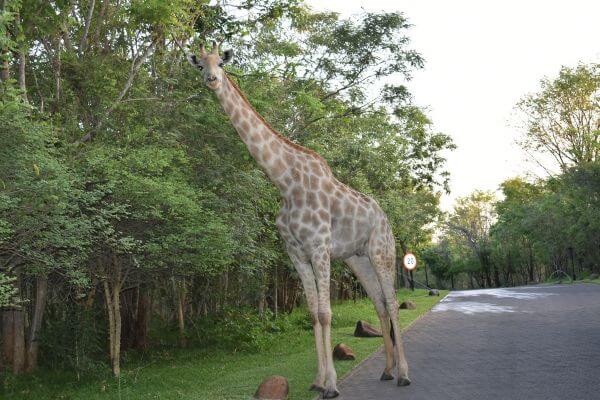
Crime is very low there, but be always careful with your belongings, don’t wear shiny jewelry, and don’t carry a big amount of money with you.
While tap water is safe to drink, rather drink bottled water from the shop to be sure or boil the tap water first.
What to pack to Victoria Falls
What kind of clothes to pack to Victoria Falls depends on the time of the year you are coming. For safari choose natural colors clothes.
- Not very short shorts
- Long trousers (evenings and winter)
- Jumper (evenings and winter)
- Jacket (winter)
- T-shirts (short sleeves and sleeves for hot season, + long sleeves for winter)
- Raincoat (rainy season)
- Socks
- Trainers or any good closed-shoes
- Flip-flops
- Swimming costume
- Sunscreen
- Sunglasses
- Hat
- Mosquitoes spray with repellent
- Mosquito net (if you are not staying in a hotel or lodge)
- Camera, mobile, charger, power bank
- Waterproof camera case
- Backpack
Conclusion: What Do You Need To Know Before Visiting Victoria Falls
Victoria Falls is an amazing country that should be on your travel bucket list. However, it is important to know all the information before your travel, so you will not be disappointed.
I covered the information about when to come, what to do, what to pack, what vaccination, currency, and visa you need.
